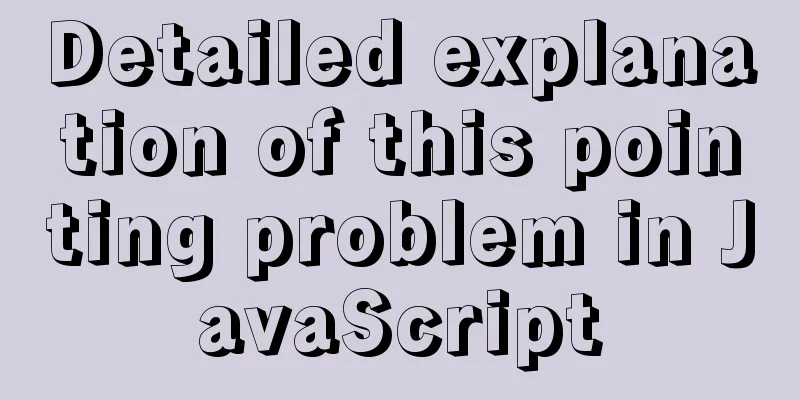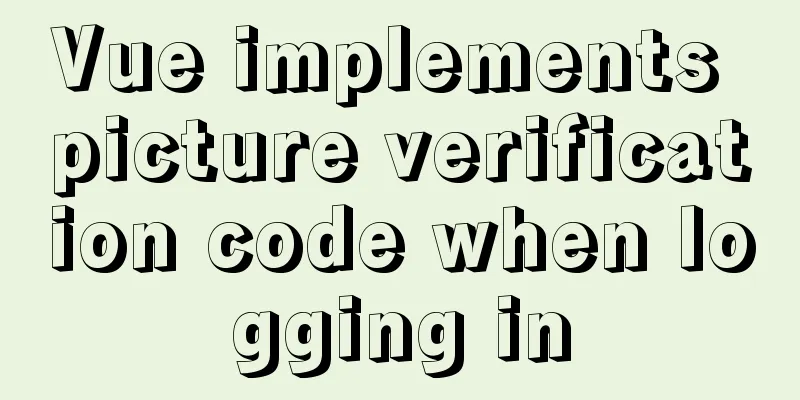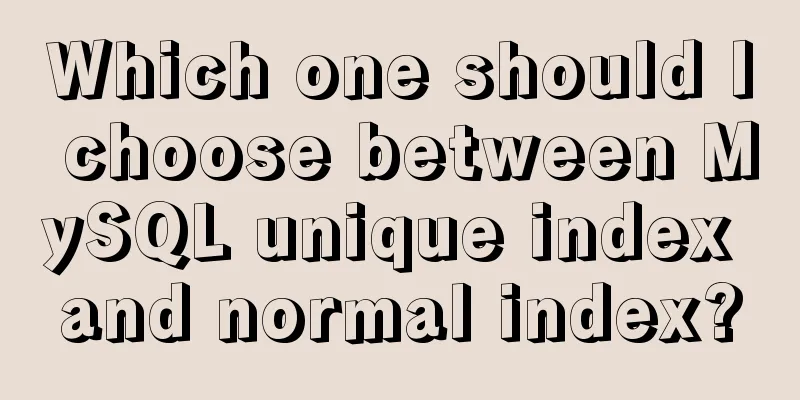Detailed explanation of this pointing problem in JavaScript

Preface
IntroductionFirst of all, we all know that this is a keyword in the Javascript language. It represents an internal object that is automatically generated when the function is running and can only be used within the function. The value of this will change depending on where the function is used. However, there is a general principle, that is, the direction of this cannot be determined when the function is defined. Only when the function is executed can it be determined who this actually points to. In fact, this ultimately points to the object that calls the function in which it is located. So let’s explore this issue step by step. Explore One
function a() {
var user = "Steamed Bighead Carp";
console.log(this.name); //undefined
console.log(this); //Window
}
a();
window.a(); //The two results are the sameAs we said above, this ultimately points to the object that calls the function in which it is located. Here, a is actually pointed out by the window object. Exploration 2
var obj = {
name: 'Steamed Fathead Fish',
f1: function () {
console.log(this.name); //Steamed bighead carp}
};
obj.f1();
It is important to emphasize again that the direction of this cannot be determined when the function is defined. Only when the function is executed can we determine who this is pointing to. In this example, the f1 function where this is located is called by the obj object, so this here points to the obj object. Exploration ThreeIf you want to fully understand this, you must look at the following examples.
var obj = {
a: 5,
b: {
a: 10,
fn: function () {
console.log(this.a); //10
}
}
};
obj.b.fn();
Doesn't it mean that this ultimately refers to the object that calls the function in which it is located? Why doesn't this point to the obj object? Three points need to be added here:
Seeing this, I believe everyone has basically grasped the principle of this pointing. Let me repeat it again: the pointing of this cannot be determined when the function is defined. Only when the function is executed can we determine who this actually points to. In fact, this ultimately points to the object that calls the function in which it is located. Here are some different usage scenarios for thisConstructor (new keyword) case
function Student() {
this.name = 'Steamed Fathead Fish';
}
var s1 = new Student();
console.log(s1.name); // Steamed bighead carpThe reason why object s1 can point to the name in the function Student is because the new keyword can change the pointer of this to point to object s1. // The execution process of the new keyword 1. Create an empty object in the function body. 2. Let the current this point to this empty object. 3. Add key-value pairs to the currently empty object through this. 4. Return the object with all key-value pairs added to the external variable. The this pointer in the timer
var num = 0;
function Obj() {
this.num = 1;
this.getNum1 = function () {
console.log(this.num);
};
this.getNum2 = function () {
setInterval(function () {
console.log(this.num);
}, 1000);
};
}
var o = new Obj();
o.getNum1();//1 (o.num)
o.getNum2();//0 (window.num)
The reason why the value of Solution: The function where
var num = 0;
function Obj() {
this.num = 1;
this.getNum1 = function () {
console.log(this.num);
};
this.getNum2 = function () {
setInterval(function () {
console.log(this.num);
}.bind(this), 1000);//Use bind to bind this to this function};
}
var o = new Obj();
o.getNum1();//1 (o.num)
o.getNum2();//1 (o.num)
explain:
According to the principles: Before using the The above is a detailed explanation of the this pointing problem in JavaScript. For more information about JavaScript this pointing, please pay attention to other related articles on 123WORDPRESS.COM! You may also be interested in:
|
<<: MySQL optimization connection optimization
Recommend
Is mysql a relational database?
MySQL is a relational database management system....
Q&A: Differences between XML and HTML
Q: I don’t know what is the difference between xml...
Corporate website and column dictionary Chinese and English comparison Friends who make Chinese and English bilingual corporate websites need
name character name character information news te...
A summary of detailed insights on how to import CSS
The development history of CSS will not be introd...
JavaScript Array Detailed Summary
Table of contents 1. Array Induction 1. Split a s...
Docker Compose installation and usage steps
Table of contents 1. What is Docker Compose? 2. D...
Comparative Analysis of IN and Exists in MySQL Statements
Background Recently, when writing SQL statements,...
How to create (CREATE PROCEDURE) and call (CALL) a MySQL stored procedure and how to create (DECLARE) and assign (SET) a variable
This article uses examples to describe how to cre...
Detailed steps to install Sogou input method on Ubuntu 20.04
1. Install Fcitx input framework Related dependen...
Detailed explanation of using scp command to copy files remotely in Linux
Preface scp is the abbreviation of secure copy. s...
Detailed Explanation of JavaScript Framework Design Patterns
Table of contents mvc mvp mvvm The source of Vue ...
MySQL trigger detailed explanation and simple example
MySQL trigger simple example grammar CREATE TRIGG...
HTML+CSS+JS realizes canvas follows the mouse small circle special effect source code
Effect (source code at the end): accomplish: 1. D...
The difference between HTML iframe and frameset_PowerNode Java Academy
Introduction 1.<iframe> tag: iframe is an i...
Solve the problem of docker pull image error
describe: Install VM under Windows 10, run Docker...









